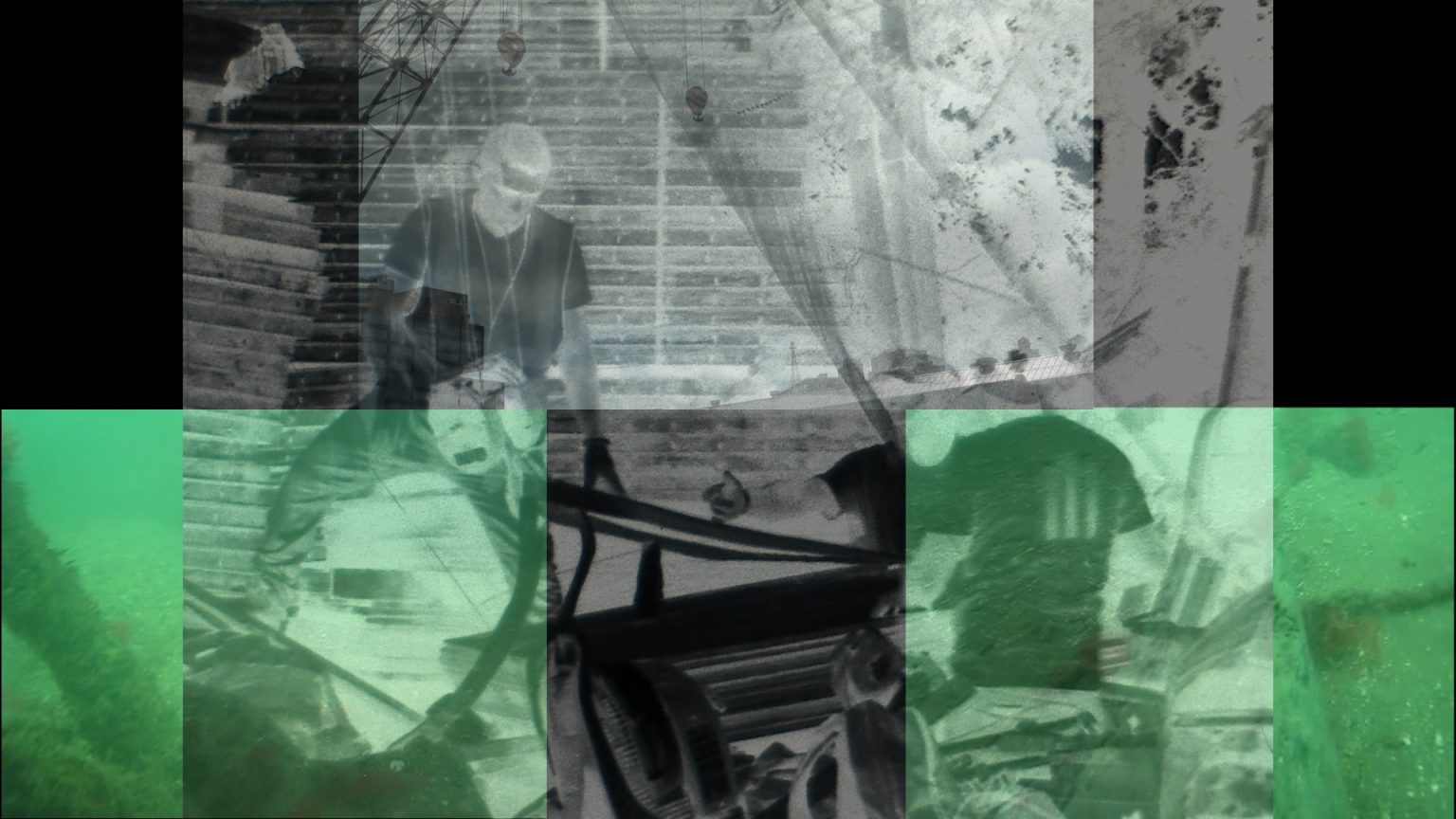Street held an artist’s residency at the Navy Yard this past year and used the time to film workers on the docks, in abandoned buildings, and in the flow of the East River. He then mixed the footage with archival images of the once-vital and newly resuscitated complex.
“When it was a navy yard there were 70,000 people working there. Now there’s about 7,000 and the goal is for 22,000 people to be working there by 2030, when they plan to open it up and have a public street that runs through it,” said Street.
With all the waterfront development happening throughout New York, the city seems to have re-embraced its waterways. Just downriver from the Navy Yard, the former Domino Sugar factory has become luxury housing and the massive Brooklyn Bridge Park is now complete. Today, post-Highline New York embraces its industrial past, even going so far as to “fetishize” the old infrastructure, said Street. His film, however, is more a quiet homage to daily activity.
Having documented the Fulton Fish Market’s downtown home before its move to modernized facilities in the South Bronx, Street knows a thing or two about industry that’s adapted to a changing landscape. He focuses his camera on the people, as well as the infrastructure, largely ignoring the high-tech firms that occupy the old warehouse spaces today.
“It’s a place where physical work is still being done in a way that’s being erased in the modern age,” he said. “I wanted to emphasize the tactile, rather than showing a trendy coffee shop or tech firm. I tried to capture grit and use that in the images.”
Street’s own process and choice of media mimic the old and new technologies at work in today’s Navy Yard. He shoots on 16 mm film from a wind-up Bolex camera, as well using Sony’s latest digital SLR. He delved into Navy Yard archives and dug up archival footage of a scuba exploration of a sunken ship nearby. In the film, all of this comes together in a collage that celebrates the imperfections of film processed by hand alongside nearly perfect high resolution from the digital camera.
“I’m in an interesting place generationally,” he said. “People who are older than me don’t know digital and the people who are younger don’t do the film. I’m at home in both worlds.”
Street said he often intentionally veered from digital precision when working on the movie, processing the film in buckets in his basement.
“When I got it home I would unspool it into the bucket: three minutes for development, three-minute wash, and four minutes for the fixer,” he said. “I just plopped it in and played a CD of the Kinks and then took it out when the song was over, because all those songs only lasted about three minutes, which was the standard for radio back then.”
Ultimately, he’d bring the digitized product back to Fordham where students learned from his work in the various media. Most Fordham visual arts students study photography on film, including 16mm, before moving on to digital, he said.
Ultimately, all the media serve as a way to sketch a contemporary portrait, conjuring “ghosts of past technologies and characters,” he said.
“Most of this is shot outside looking at the physical plant, including the shadows of workers from an observational distance,” he said. “It’s a film that’s between the documentary and the experimental. Some may call it avant-garde, and I don’t have a problem with that.”

